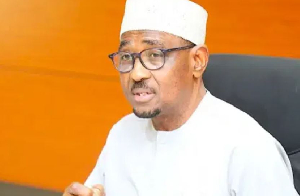The role of the modern Human Resource Management Practitioner (HRMP) appears simple and straightforward on paper. It is seen by many, unfortunately including practitioners, as an easy role that can be performed with an eye closed.
The truth of the matter is that, than any other managerial function, the role of the HRMP is complex and demanding. It has to do with realistic and practical up-to-the-minute decision making, planning and execution. It is one role that cannot be performed in a sleep mode. The moment the HRMP sleeps on the job, the doom of the organization is spelt.
Imagine an untrained workforce; how will workers be tooled and retooled adequately to perform their complex and nuanced roles? Imagine unpaid salaries; where lies that extrinsic motivation to work?
Imagine an undeveloped workforce; how will exiting workers (through retirement, death, resignation, transfer, etc.) be replaced?
Essentially, the core functions of the HRMP has been broadly categorized into overseeing of department functions and managing the workforce of the organization – the former directly and latter, directly and indirectly through functional managers, coordinators and supervisors.
To perform these core functions (both managerial and operational), the HRMP must be well-versed in each of the human resource disciplines — staffing (recruitment and selection), orientation, compensation and benefits (payroll) management, training and development, performance management, industrials relations, employee relations and conflict resolution. Each of these is critical to the successful management of the workforce. You leave one out, the centre cannot hold.
While many HRMP have shown gravitas in many of these disciplines (many now disaggregated in large multinational organizations to give them focused attention), they have forgotten one critical unwritten role in their Job Description (JD) — Role Modeling.
Role modeling is one key role that seems to be forgotten almost always by practitioners is their line of duty. It is not a function that can be found explicitly stated in any JD at the point of recruiting a HRMP for an organization. It is however embedded in all the disciplines of Human Resource and is expected to be guardedly exhibited conspicuously.
I would like to explain the concept in its operational context as “doing what one preaches and expects of others in line with organizational edicts”.
It’s a moral high ground that requires of practitioners the moral responsibility of leading by example. Morally, it is wrong to teach others how to behave appropriately without first believing in and behaving appropriately themselves.
So then, in which areas are practitioners expected to serve as role models to workers? I dare say all areas. In every single daily undertaking.
In the course of orientating newly engaged workers, for instance, the practitioner takes them through the mission, vision, values, goals, objectives, code of conduct, standard operating procedures, etc. of the organization.
For example, a newly engaged employee may be told his or her official reporting and closing times. He or she may also be told that the official cars of the organization are meant to be fueled only at specific fuel stations.
The worker may also be told that per the policy of the organization, one cannot drive home one’s official car at the end of the workday, unless the functional head permits it.
Another example, which runs through all organizations’ policies, is the acceptance of gifts and declaration of same. It is in the compliance book or code of conduct of every progressive and modern organization.
Since there is a thin line between gifts and bribes, the code of conduct will attempt to delineate one from the other to save the worker from confusion and possible breach.
Some of these edicts are formally spelt out together in a form of employee handbook and signed off by the employee and the HRMP to indicate issuance and acceptance, and for the sake of labour disputes in the future, an inevitability.
From the foregoing, the practitioner’s role modeling role begins from the word go — from the recruitment process through selection and the making of an offer all the way to the last day of the employment relationship.
So what are some of the role modeling behaviors expected of HRMPs?
1. We are not to engage in horseplay.
2. We are not to perpetrate fraud; falsification of documents, etc.
3. We are not to divulge company secrets to competitors and customers and suppliers.
4. We are not to divulge employee personal information given in trust to a third party.
5. We are not to report to work late. In fact, we must endeavor to be at least 15 minutes early.
6. We are not to dress shabbily to work—appropriate dress code for specific events and programmes.
7. We are not to abuse our authority for personal gains, for example demanding or accepting a bribe or sex to employ or promote a worker, or penalizing a worker for failing to do so.
8. We are not to originate and spread rumours; not even, perceptibly, for the benefit of the organization.
9. We are not to steal from the organization. For example, taking home toiletries, overstating fuel for our official car and pocketing the difference in cash.
10. We are not to misuse company resources. For example, using company phone credit or data for personal purpose.
11. We are not to quarrel or fight with anyone at work or outside of work. That will defeat our conflict resolution function.
12. We must not tell a lie. We must be noted for our honesty, even to a fault.
13. We must not be noted for absenteeism.
14. We must be responsive to and responsible with our official time by reporting to work early and not deserting our post midway, or closing too early.
15. We must meet deadlines with our reports and schedules. When we set up a meeting, we must be seated first ahead of other attendees.
16. We must operate within set standards with little or no deviation.
17. We should not be objects of fear and panic; employees must not take cover when they see us approaching. Rather, let us earn their respect and honest conduct.
18. We must not make the work environment toxic with poisonous behaviours that generate stress, worry, fighting, blackmail and backbiting by and among workers.
19. We are not to use office hours for personal work. Not even with permission from above as that will send a wrong signal to those below.
20. We are to eschew favoritism and disparate application of work rules and regulations. There should be consistency and uniformity as fairly as applicable.
If we are able to do these things dispassionately and regularly, we will have the moral right to hold others to it. We will not institute disciplinary actions with troubled and restless conscience.
So highly is the role modeling role of practitioners held that Mr. Austin Gamey of Gamey & Gamey Group and who is a leading expert in Labour Relations and Alternative Dispute Resolution (ADR) told practitioners in a 2019 Labour Law Masterclass organized by the Professional Human Resource (PHR) Centre at University of Ghana, Legon that, the HRMP is the Managing Director’s Manager.
The HRMP is expected to serve as a check on employees, fellow functional managers and the Managing Director, who should be prompted politely when he or she is in error.
Can the HRMP summon the testicular fortitude to question the conduct of an employee, colleague or the Managing Director if he or she is not himself clean of the very bone of contention? No.
In a nutshell, Human Resource Management Practitioners are the morality police of their organizations. They are the last man standing when everyone else has failed the morality test.
By: Stephen Kwame Agbai
The writer is a Human Resource Management (HRM) practitioner with considerable experience in the FMCG environment. He is a Full Member of theInstitute of Human Resource Management Practitioners (IHRMP), Ghana.
Opinions of Tuesday, 12 May 2020
Columnist: Stephen Kwame Agbai
The forgotten role of Human Resource Management practitioners
Africa














